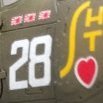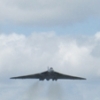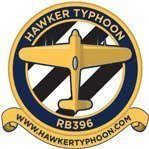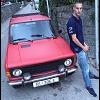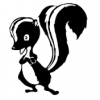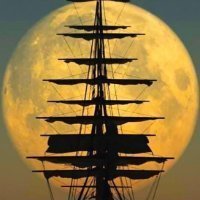Search the Community
Showing results for tags '1:48'.
-
My latest build, the 1:48 Tamiya Matilda finished out of the box as the well known "Phantom", which according to the instruction sheet is from 42 RTR, 1st Army Tank Brigade, North Africa 1941. The Caunter scheme was painted in Tamiya acrylics using the mixes available here: http://www.network54.com/Forum/47208/thread/1252022924/The+complete+Mike+Starmer+Acrylic+Paint+Mix+Database Build thread can be found here. These Tamiya 1:48 armoured vehicles are addictive! My next one - the little Dingo Mk II. I may have a go at painting the crew for this one. Thanks for looking!
- 10 replies
-
- 20
-

-
Hi guys, just using this as a place holder title says it all really going to go out of box, two reasons; A). I think that Eduard boxings have enough detail to get away with it. B). I just fancy not working with resin for a while.... Any who I've got finish this mosquito first then onto the 109 Regards Joss
-
I am getting addicted to the Tamiya 1:48 scale military vehicles. After a couple of tanks, something a little smaller - a Dingo Mk II scout car. Just two sprues of plastic: And just one set of markings: My challenge this time - my first go at painting figures. The kit comes with two figures, and it would seem a shame not to have a go. An morning at the bench, and already have most of the construction complete. Only slightly tricky part, making sure the figures were assembled so that they fitted correctly inside the vehicle. So onto painting. My understanding is that the base colour for British armoured vehicles in NW Europe in 1944 was SCC15 Olive Drab. I used the following recipe: 5 parts Tamiya XF81 + 1 part Tamiya XF58 + 1 part Tamiya XF71 (recipe found in the following conversation: http://www.britmodeller.com/forums/index.php?/topic/234913729-british-ww2-tank-colors/ ) Painting ensued. I am reasonably pleased with my first go at painting figures. They look a bit stark at the moment, but some washes will tone the look down a bit. Only issue so far are some rather visible injector marks on the open roof part. A bit of Mr Surfacer will deal with that, although it will be a fiddly sanding job later. While I wait for the paint to dry, a got the display base sorted. A cheap picture frame was the base, and then some earth and grass coloured scatter did the trick. A bit simplistic, but bette than nothing.
- 16 replies
-
- 3
-

-
My next project, a out of the box of this little beauty. Some sprue shots The markings and metal weights for the hull (better I think than the cast lower hull on the Crusader I did recently). I am going to do "Phantom" I have had a go at mixing the paints for the Caunter scheme from the stock of Tamiya Acrylics that I have. So all good to go. Any comments or advice very welcome.
-
EE Canberra Pr.9 1:48 Good evening! Finally, at long last I'm calling this one done. It's a 1:48 Airfix Canberra Pr.9 that I picked up at Cosford this year. Overall the kit is quite a good one- only problems are the thickness of the plastic, lack of a proper Pr.9 cockpit or Navigator's nose compartment and lack of a bomb bay. Thankfully the latter was amended with the help of @canberra kid who very kindly offered me one to use in this build! WIP: Kit: Airfix Canberra Pr.9 1:48 Paints: Vallejo, with Alclad for the exhausts Weathering: Thinned down Vallejo paint, Flory wash, as well as some AK Interactive washes Scratchbuilt: Almost the entirety of the Cockpit and Navigator's compartment, upper fuselage aerial, rear fuselage camera and bomb bay. And a few in-progress images of the cockpit: Thank you very much for having a look! Kind regards, Sam
- 17 replies
-
- 41
-

-
This aircraft is something close to my heart as I am the membership and events secretary for the Hawker Typhoon Preservation Project, We are aiming to get the world's only flying Hawker Typhoon MkIb flying again. This kit is the superb Hasegawa kit with Eduard cockpit upgrade,and 4 prop spinner from Ultracast. The aircraft was delivered to 174 ‘Mauritius’ squadron on 4th Jan 1945, based at B.100 Goch, and received the code ‘XP-W’. RB396 was lost on operations and was recorded Cat ‘E’ on 1st Apr 1945. Originally equipped with bombs after conversion to the Typhoon (July 1943), 174 squadron converted to rockets by January 1944. The squadron spent the next few months attacking radar stations, flying bomb sites and German communication links in northern France. After D-Day they moved to Normandy providing close support for the Army and attacking German tanks and transport. By September 1944 they had moved to the Netherlands where their remit was offensive sweeps over Germany. On the 1st April 1945 RB396 was the mount of Flt Lt Chris W House setting out from Goch for an offensive sweep. Shortly after selecting his target and releasing his salvo of rockets RB396 was hit by flak, too low to bail out and rapidly losing height Flt Lt House force landed his aircraft to the North East of Denekamp. In the immediate aftermath of the attack the whereabouts of Chris House was not known and as squadron members returned to Goch they reported that he was seen to successfully force land RB396 and it was assumed taken POW, had he survived the landing. He had indeed survived and successfully evaded capture, making his way back to allied lines and much to the surprise of his comrades arrived back at the squadron on 5th April. After 174 squadron was disbanded on 8th April Chris House went on to complete further operations and remained in the RAF until retirement long after the war. If your interested in further information have a look at:- http://hawkertyphoon.com/ Or: https://www.facebook.com/search/top/?q=hawker typhoon rb396 restoration
-
This aircraft is something close to my heart as I am the membership and events secretary for the Hawker Typhoon Preservation Project, We are aiming to get the world's only flying Hawker Typhoon MkIb flying again. This kit is the superb Hasegawa kit with Eduard cockpit upgrade,and 4 prop spinner from Ultracast. The aircraft was delivered to 174 ‘Mauritius’ squadron on 4th Jan 1945, based at B.100 Goch, and received the code ‘XP-W’. RB396 was lost on operations and was recorded Cat ‘E’ on 1st Apr 1945. Originally equipped with bombs after conversion to the Typhoon (July 1943), 174 squadron converted to rockets by January 1944. The squadron spent the next few months attacking radar stations, flying bomb sites and German communication links in northern France. After D-Day they moved to Normandy providing close support for the Army and attacking German tanks and transport. By September 1944 they had moved to the Netherlands where their remit was offensive sweeps over Germany. On the 1st April 1945 RB396 was the mount of Flt Lt Chris W House setting out from Goch for an offensive sweep. Shortly after selecting his target and releasing his salvo of rockets RB396 was hit by flak, too low to bail out and rapidly losing height Flt Lt House force landed his aircraft to the North East of Denekamp. In the immediate aftermath of the attack the whereabouts of Chris House was not known and as squadron members returned to Goch they reported that he was seen to successfully force land RB396 and it was assumed taken POW, had he survived the landing. He had indeed survived and successfully evaded capture, making his way back to allied lines and much to the surprise of his comrades arrived back at the squadron on 5th April. After 174 squadron was disbanded on 8th April Chris House went on to complete further operations and remained in the RAF until retirement long after the war. If your interested in further information have a look at:- http://hawkertyphoon.com/ Or: https://www.facebook.com/search/top/?q=hawker typhoon rb396 restoration
- 10 replies
-
- 22
-

-
I never get tired of building this particular aircraft. Using the Hasegawa MkIX kit, which is sublime, along with the Brigade Models MkIX T conversion set, which with a bit of TLC produces a stunning model. Decals are from Xtradecal RAF number and letters set and paints as usual are Vallejo Air. This aircraft is: 441 Sqn RCAF & Biggin Hill Heritage Hangar Spitfire MkIX T
-
Hello chaps Nice to be around this one, the wait is over... I am pretty sure this is going to be a pleasant and entertaining group build, as it is usual here on BM... I'm in with a colorful F-111E carrying a nice noseart. Not sure about its role in Libya, all I know it was the commander of the sqd. flagship and that the noseart brought luck to the pliot back from the days of Vietnam. Hopefully someone can add some info o the subject, I'd be very happy to hear. Initially I was thinking of a downed F-111F 70-2389 callsigned Karma 52, but since I don't have the decals for it, I'll stick with the E version. Plus I've heard the IP in the Verlinden set is to match the E and not the F version... I cannot confirm it yet, I will have to take a look at both of the panels and then compare it to the resin one... Anyway, here's obligatory stuff: classic Libyan raiders markings... eduard etch old Verlindern set, still very useful a must too bad both afterburners are open, but still better than the kit offering this last item is very nice, but I sincerly doubt I will use, as my place on the shelf is limited and this beastie's wingspan is not a joke... that's about it for now... cheers, Vasko
-
I actually started working on this kit in 2015, but it went back in the box when some other things grabbed my fancy. Back then I attempted to improve Tamiya's lame attempt at the radio antenna. I shaved off the solid cross bit and replaced it with a few pieces of styrene rod bent to the approximate shape. It isn't perfect, but it captures the general look of the real thing. I also began work on the commander figure. I'm not much of a figure painter. For now I got his face looking generally human, but I need to work on his hair and uniform. I'm using multiple transluscent coats of Vallejo paints, but I'm finding trouble with brush control, so things are looking a little blah! Still, better than some of my earlier attempts. And now moving on to the model proper. The major hull and turret components came together within about 15 minutes. about a half hour after that, the suspension units are on. They're simple but effective. Super-detailers can have a field day here, but since I'll be mounting the model to a base, this is more than good enough for me. That is about all for now. More tomorrow.
-
Here I present my rendition of the Tamiya 1:48 scale Crusader III. I was inspired by Plastix's terrific build in the Made in Britain Group Build (here), and as I had it in the stash I thought why not. It is a purely out of the box build as I have not built an AFV on a larger scale before. It was intended as a quickish build, but then due to a serious of unfortunate events it's taken almost 18 months to finish. That being said, I am very happy with it and am now considering the next step up, a 1:35 Tamiya Matilda. Finished in brush painted Tamiya acrylics, with weathering from water colours and well thinned Italeri acrylics. Build thread can be found here. Thanks for looking, I'd welcome and pointers for future AFV builds.
-
I don't have much to show yet, but just wanted to stake a claim in the GB. This far, I have painted all of the RLM 2 parts and began gluing a few together. Here are the engine mounts/gun deck, and the fuselage chin panel with air cooler. Tamiya rlm gray with a light wash so far. Weathering still to come.
-
Finally finished another one. Happy with some aspects, bit disappointed with others. This is the Tamiya MkVI Beaufighter in 1:48 scale. The build thread can be found here: So the kit is pretty much OOB - the only aftermarket addition was some Eduard seatbelts to improve the cockpit a bit. Paints were acrylics from AK Interactive, with gloss finish by pledge, final matt finish by Model Master Acryl matt clear cote. I made use of Flory washes for some weathering, with some AK Interactive dust and dirt and pigments for an extra touch.
- 13 replies
-
- 31
-

-
- Beaufighter
- 1:48
-
(and 1 more)
Tagged with:
-
I bought this kit on a whim when I was in the model store a couple of weeks ago. Having access to the intertubes via phone is dangerous, because I looked this kit up while in the shop and the reviews were all very positive. So that was that. Anyway, this is a build I have going so I can turn to it while the paint is drying on my spitfire. It's a lovely kit, really well designed, with very clean moulding details. I started off by undercoating with vallejo grey acrylic primer (after washing everything in soapy water of course), and then airbrushing interior green on the cockpit tub and inside the fuselage. I am using Ammo of Mig acrylics for the interior. I also washed the interior fuselage with Ammo of Mig interior wash. My original plan had been to basically paint everything for the cockpit on the sprues - but after reading a couple of other build threads, and thinking it through, I realised that would just result in having to redo and touch up a lot of stuff, so today I assembled the cockpit tub somewhat. The decal sheet comes with some instrument dials. They are a little bit off register, but I don't think it's going to be possible to make that out through the cockpit windshield, and they will likely add just a little more detail to the instrument panel, so I will use them. I'll also make some seatbelts, but first I have to finish painting and weathering the tub.
- 40 replies
-
- 3
-

-
- 1:48
- Beaufighter
-
(and 1 more)
Tagged with:
-
I've been searching lately for a resin exhaust set for the Academy F-15C MSIP boxing but I'm unable to find any. I know that Eduard did some for their Fighting Eagles edition but there's nothing on their website about them anymore. So I was wondering if anyone has tried to fit the Aires set thats meant for the Hasegawa kits to an Academy version? Are they a good fit? Any help or pointers would be greatly appreciated. Many thanks. EDIT: I was wondering if I could be really cheeky and ask a huge favour? Does anyone on here have the Aires F-15 exhausts within easy reach? If so, would it be possible to get a couple of measurements? Specifically the burner can diameter that sits inside the airframe and the outer diameter of the can where it buts up to the fuselage. Any help would be much appreciated.
-
Extras - None. Kit - Airfix 1:48 Paint - All enamels Decals - Kit, Aeromaster, Eagle Strike Spitfire Vb 302 (Polish) Squadron 'Operation Rutter' (Dieppe rehearsal) Croydon, July 1942 Yep this is my take on the Airfix 1:48 Spitfire …and from the outset, have to say I didn't enjoy 'the build', but before you all head down to Wilkinsons (US = Walmart) for blazing torches and pitchforks, let me explain… I found the cockpit assembly and installation is far to fiddly and intricate – it takes so much time building-up and test fitting that all the joy of the frankly superb detail is simply lost – also locating/gluing some of the details in to the floor area then the floor to the fuselage is down to luck more than skill, I was lucky. The attachment of the main gears is an absolute horror – the ‘L’ shaped cut at the pivot point just inside the well simply doesn’t have any residual strength to allow you to later attach the wheels on to the axles and is too thin to drill’n pin – go-on ask me how I know !. The plastic is a little too soft (reminiscent of old Heller kits) and lack ‘sharpness’. Good points outweigh the bad it has to be said – Superb details, crystal clear canopies (and so many of them), excellent fit of all the main parts and once you’ve wrestled the cockpit in to the fuselage it looks magnificent. I’ve harboured the decals for over twenty years and unfortunately they have suffered – they were produced for one of the Hasegawa boxings of their Spit Vb by Aeromaster in the 1990’s and despite very careful storage in the meantime, one squadron code disintegrated completely and had to make it up from spares. Stripes are all painted & masked, as are the yellow ID panels. The camo is extensively pre & post shaded as a painting experiment, and has come-out quite well, but I still need to work at it. So that’s it – a three-week build and a half-decent model at the end of it, far too many errors to be a ‘winner’ but looks fine on my 1:48 WWII shelf. As a conclusion, as a 'build' I prefer the Tamiya 1:48 Spits they are a whole degree more enjoyable - I've built both kits so feel comfortable saying this. The Airfix kit is fine and well priced and beautifully detailed, more so than the Tamiya one, but as a 'build', I prefer the Tamiya kits. Thanks for taking the time to look, please feel free to make any criticism or comment or ask any questions. Ian.
-
Kit - Trumpeter 1:48. Paint - Alclad lacquers, AK Xtreme Metals, Xtracolour & Humbrol enamels. Decals - Microscale & Superscale. Extras - Hasegawa 750lb'ers, Quickboost resin seat, Eduard pre-painted etch. NA F-100D Super Sabre 'Pahodee Tiger' 308th TFS, 31st TFW Bien Hoa AFB Mid 1965. Here’s my just completed Trumpeter 1:48 ‘Hun’. What a kit !!, simply fell together with almost no input from me. Only additions are a Quickboost seat and Eduard pre-painted etch set for the pit – neither of which are actually ‘needed’, simply a concession to middle-aged sausage fingers !! Not too much to say about the actual machine except that it is said to be assigned to Don Kilgus’ wingman in mid-1965, and despite my (and others) best efforts, just cannot find the name of the pilot. If the scheme is familiar, it may be because way back in the very late 1970’s Esci featured it for their (quite awful) 1:48 kit as the box-art. For my model, I’ve used an ancient MicroScale sheet for all the stencilling and a more recent SuperScale sheet for the aircraft specific markings. Overall aluminium paint is Xtracolour enamel, the heat-scorched NMF area around the engine is a combination of Alclad lacquers, AK Xtreme Metals and Tamiya clear blue & orange. Thouroughly enjoyed every minute of this one. Thanks for taking the time to look and/or comment. Next, a BoB Hurricane or AVG P-40. AFN Ian.
- 14 replies
-
- 22
-

-
I've got a Work In Progress in progress on the Tamiya Tomcat and there hasn't been much progress because of these two kits. The Boston has been in progress for hundreds of years and fought me all the way. It's Italeri, but I think it might have been Revell Monogram once. I'm pleased that I learned a lot but the final result is a disappointment. The Pilots canopy is cracked, the nose is full of plastic swarf, the undercarriage is just a mess. However, the painting is getting close to what I want it to be and that makes it all worthwhile. The Wildcat is a HobbyBoss offering and was done in a week. (I bought it at Cosford). A fun build though not without its frustrations. Again, the paintwork is an improvement so I'm happy. Now that I've settled into being retired and the house is optimised for hobbies, I'm hoping to be churning them out quickly enough to actually improve my skills to a point nearing (but never reaching) personal satisfaction. So without further waffle, here you go. Oops? Not quite! What do you think of them then? At this rate I'll be needing new shelves....
- 11 replies
-
- 32
-

-
- 1:48
- Hobby Boss
-
(and 1 more)
Tagged with:
-
Northrop P-61C Black Widow Hobbyboss 1:48 The Northrop P-61 Black Widow, named for the American spider, was the first operational U.S. military aircraft designed specifically for night interception of opposing aircraft, and was the first aircraft specifically designed to use radar. The P-61 had a crew of three: pilot, gunner, and radar operator. It was armed with four 20 mm Hispano M2 forward-firing cannons mounted in the lower fuselage, and four .50 in (12.7 mm) M2 Browning machine guns mounted in a remote-controlled dorsal gun turret. It was an all-metal, twin-engine, twin-boom design developed during World War II. The first test flight was made on 26 May 1942, with the first production aircraft rolling off the assembly line in October 1943. The last aircraft was retired from government service in 1954. Although not produced in the large numbers of its contemporaries, the Black Widow was effectively operated as a night-fighter by United States Army Air Forces squadrons in the European Theatre, the Pacific Theatre, the China Burma India Theatre and the Mediterranean Theatre during World War II. It replaced earlier British-designed night-fighter aircraft that had been updated to incorporate radar when it became available. After the war, the P-61—redesignated the F-61—served in the United States Air Force as a long-range, all weather, day/night interceptor for Air Defence Command until 1948, and Fifth Air Force until 1950. The subject of this kit is the P-61C, which was a high-performance variant designed to rectify some of the combat deficiencies encountered with the A and B variants. Work on the P-61C proceeded quite slowly at Northrop because of the higher priority of the Northrop XB-35 flying wing strategic bomber project. In fact, much of the work on the P-61C was farmed out to Goodyear, which had been a subcontractor for production of Black Widow components. It was not until early 1945 that the first production P-61C-1-NO rolled off the production lines. As promised, the performance was substantially improved in spite of a 2,000 lb (907 kg) increase in empty weight. Maximum speed was 430 mph (690 km/h) at 30,000 ft (9,000 m), service ceiling was 41,000 ft (12,500 m), and an altitude of 30,000 ft (9,000 m) could be attained in 14.6 minutes. The P-61C was equipped with perforated fighter airbrakes located both below and above the wing surfaces. These were to provide a means of preventing the pilot from overshooting his target during an intercept. For added fuel capacity, the P-61C was equipped with four underwing pylons (two inboard of the nacelles, two outboard) which could carry four 310 gal (1,173 l) drop tanks. The first P-61C aircraft was accepted by the USAAF in July 1945. However, the war in the Pacific ended before any P-61Cs could see combat. The 41st and last P-61C-1-NO was accepted on 28 January 1946. At least 13 more were completed by Northrop, but were scrapped before they could be delivered to the USAAF. Service life of the P-61C was quite brief, since its performance was being outclassed by newer jet aircraft. Most were used for test and research purposes. By the end of March 1949 most P-61Cs had been scrapped. Two entered the civilian market and two others The Model This kit is the third release in the series of P-61 Black Widows from Hobbyboss and comes in a sturdy top opening box with some very nice artwork on the lid of the aircraft in flight over some rather threatening clouds. Inside there are nice sprues of medium grey styrene, two separate engine cowlings, two sprues of clear styrene, six metal parts and the decal sheet. On inspection of the sprues it becomes quite clear that there is a pretty major problem with the kit, and that is the fact that although the box artwork and photographs on the internet show the aircraft, (the only option on the decal sheet), with a dorsal turret, it is completely missing from the kit. There isn’t even provision for one on the fuselage parts. Although this omission doesn’t make the kit unbuildable, purists will no doubt be hunting round for a spare turret to fit. It is a great shame though, that the company’s research or lack of, has let them down again. If I can find a decent photograph of the aircraft, (which is still extant in the National Museum of the United States Air Force), in seconds, why couldn’t Hobbyboss? That said, it still looks like it is a nice kit, not particularly difficult, in fact it looks quite a bit simpler than the old Monogram release. I’ve seen the A version built at my club and it looked fantastic, so there’s no reason that this shouldn’t build up the same, albeit incorrect. The build begins with the front cockpit and the fitting of the pilot and co-pilot seats, joysticks, two piece gun sight/controller, heater unit, rudder pedals and instrument panels, each with decal instruments, to the single piece floor. The nose wheel bay is then fitted out with the three piece nose wheel leg and wheel, which has the distinctive mudguard moulded to it. On top of the wheel bay the first of the metal parts is attached, before the bay is glued to the underside of the cockpit floor. Another, much large metal part is glued forward of the pilots instrument panel. Inside the two fuselage halves, the cockpit side walls are attached, as are the four 20mm cannon muzzles. The rear cockpit is then assembled, from floor, rear bulkhead, with moulded radio sets, joystick, two piece gun sight/controller and seat. The front and rear cockpits are then enclosed within the two fuselage halves. The radar set is made up from the support base, radar dish and two metal parts. The radar is then glued to the front of the fuselage and encased in the clear nose section, which, unfortunately doesn't look quite the right shape, being too short. The single piece front windscreen and canopy is then glued into place, followed by the four glazed areas of the rear cockpit. The clear parts are exceptionally clear, as can be seen in the photographs. The nose wheel bay doors are then added before work moves on to the two booms. Each boom comes in two halves and fitted with the main wheel bays, which are fitted with a separate mid bulkhead, main oleo, retraction jack, scissor link and main wheel. The wheel bays are sandwiched between the boom halves, which are then put to one side to set fully. Each wing is made up of a single piece upper section and two lower sections with two radiators glued between them. If you are going to add the external tanks or bombs then the holes will need to be opened up before the wind sections are glued together. The wings are then attached to their respective booms, and fitted with the ailerons and landing light covers. Each engine is made up from a metal firewall part, just the front bank of cylinders, and gearbox cover, into which the propeller shaft is fitted. The propeller is then attached and the engines fitted to the booms, along with the large inter-cooler intakes and main wheel bay doors. The completed boom assemblies are then attached to the fuselage assembly with the horizontal tail plane fitted in between. The external tanks are each made up from two halves, and include the pylons, whilst the bombs are made from separate bodies and tails, then fitted to the pylons. The bombs and tanks are then fitted to their respective positions. Along with the pitot probe and side mounted aerials. Decals The single aircraft option provided on the decal sheet is for P-61C, Ser. No. 43-8353, Moonlight Serenade in an overall black scheme, with green spinners, cooling gills and upper nose section. The decals are well printed, in register and nicely opaque. They are quite glossy and should settle down well on a gloss varnish as there is minimal carrier film on all but the serial numbers, but it is pretty thin. Conclusion Well, being one of my favourite aircraft, I'm quite disappointed, it’s shame that Hobbyboss have managed to produce another clunker. I guess if you can get some other decals for a P-61C, one which didn’t have a dorsal turret, (were there any during the war?), or build it as a post war test aircraft. It also seems to be over simplified, although that is not necessarily a bad thing in an age where kits seem to be getting more and more complicated. It’ll certainly be good for a beginner, as the parts should all fit well and it will look great when built, and quite large. I do like the idea of the metal parts incorporated in the build to save on finding places to fill with lead. Review sample courtesy of
-
Hello chaps. Finally this one has come to an end. It is a Kopro kit with tons of aftermarket and many corrections made. Check more on the build in this topic : work in progress The kit is made for a friend and blogger R.S from the very well known blog on SyAAF airplanes. Here it is... for more photos check this site: http://militaryaviation148.blogspot.si/2017/03/su-7bmk-syaaf-1973-ramadan-war.html
- 16 replies
-
- 24
-

-
Gentlemen As I am almost done with the Iraqi Hunter, it's time to post a new WIP. This one is second in line of the SyAAF next to the L-29. I thought of doing the one from the Ramadan war in '73... The kit is the old Kopro and during the years I managed to collect some aftermarket for it: Neomega cockpit and seat, Eduard interior, SAC metal landing gear, quickboost vents and such and Armory resin wheels. A few years back I did an Algerian Fitter, so no big surprises are expected... The seat looks great: the pit is also nice... After some painting... I've used IP decals from some leftovers, cut them out... I think it's better than I could ever do by hand... To make a BM/BMK out of BKL you need to remove some plastic. The BKL had skids on the landing gear so the wells were larger. A minor surgery... Quickboost vents are too small And that's about it for now. Stay tuned and thanks for looking in. cheers
- 36 replies
-
- 12
-

-
Pitot Probes and Guns for Mig 25’s, Mig 31 and AH-64 1:48 Master Models The latest releases from Master Models in their series of replacement pitot probes have recently arrived at BMs London offices. They are well up to their usual standard and very sharp, so care should be taken once fitted. They are so much better than the styrene ones found in the kits. [AM-48-125] – Has been designed for all kits of the AH-64A Apache and contains the M230 Chain gun barrels pitot probes and tail antenna. [AM-48-129] – This pack includes turned brass pitot tube and resin element for the ICM Mig 25 Foxbat kit. [AM-48-130] – This pack includes turned brass pitot tube for the Kitty Hawk Mig-25PD/PDS(Foxbat E) [AM-48-131] – This pack includes turned brass pitot tube and resin element for the AMK Mig-31 Foxhound Conclusion Master Models must have a tremendous machining set up to be able to produce so many different pitot probes and to produce them with such finesse. The always look great on the finished model. Review sample courtesy of Piotr at
-
Hi again, recent completion number 2 from me! This time its the Airfix 1:48 Seafire Mk.XVII, finished as one of the box options, a plane from No 1832 Naval Air Squadron, RNAS Culham. The kit is a little bit chunky in places, closer to the standard of their Mk.XII than their most recent kits. I spent some time thinning various items such as the wing trailing edges, radiator housings and prop blades, which I think helped the overall look? I have seen comments elsewhere on this site about the prop blades being too narrow but in the end I went with what Airfix provided. Panel lines and cowl fasteners are a bit deep too so I tried putting a thick coat of primer on and rubbing it back to reduce this a bit. On the whole though it was still a nice straightforward build and i think it looks quite smart all together, I hadn't looked much at Seafires before this build but the lines of the Mk.XVII have really grown on me, with the short griffon nose, low back and large tail. Other additions were replacing the cowling scoop with thin sheet aluminium, the ends of the cannon with brass tube, drilling the exhausts out and adding a whip aerial from fusewire. Paints were Tamiya throughout and dark grey (which I thought looked a reasonable match for EDSG), also Alclad armoured glass for the windscreen insert and quarter panels. Finished with a light grey oil wash and light weathering, as with my Pr.XIX I thought they would have been fairly well looked after. As with my last build big thanks go to PeteW for the lovely photos, on with the pics and thanks for looking, Stu!
-
Hi All, Long time since I got anything finished and posted but here's the first of my 2 recent completions. Its Airfix's 1:48 Spitfire PR.XIX, finished as one of the box options, PS888 based at RAF Seletar in 1954. Theres not much I can say about the kit that hasn't already been said by others, it builds great from the box, nicely rendered detail and fit was good. The only additions I made were; a set of brass seatbelts by Lion Roar, replaced the solid moulded intake on top of the cowling with thin sheet aluminium, drilled out the exhausts and added a bit of fuse wire for the whip aerial. Paints were Xtracryics for the PRU blue and Tamiya for the rest. I finished her with a light oil wash and minimal weathering as I presumed they would have been kept fairly clean then dulled down with Xtracrylics matt varnish. All in all a very enjoyable build and I can definately see more of these in my future, quite keen to use it as a base to try one the many options I have seen on here to a Mk.XIV conversion. Hopefully if I do then someone will wake up and offer one straight from the box :)!! Last thing to say is a big thanks to PeteW for the lovely photos that show her off far better than my phone camera, thanks mate! Anyway on with the pics, thanks for looking and any C&CC always appreciated, thanks, Stu.
- 10 replies
-
- 33
-

-
Kit - Kinetic 1:48 Paint - All enamels - AK Xtreme Metal, Tamiya & Xtracolour Decals - Kit Extras - Eduard Zoom set & Tamiya LAU-3 pods. Northrop F-5A 'Freedom Fighter' 522nd Squadron, 23rd Tactical Wing Tan Son Nhut AB Late 1967. Mostly the kit was an easy and rewarding build - I say mostly as the fit of the intakes was laughable, not so much as a gap at the rear, more of a 'yawning chasm' - however, I've wanted a 1:48 F-5 in this exact scheme since I saw a 1:72 model at the Nationals when it was held in Stoneleigh !!, yes I'm that patient. On the shelf it looks very comfortable alongside my other Vietnam builds. Would I build another ??, well probably a two-seater with a full load of three drop tanks like we used to see at the Mildenhall shows back in the day. Please feel free to ask any questions, make any comments or criticisms. AFN, next something in 1:72. Ian.


